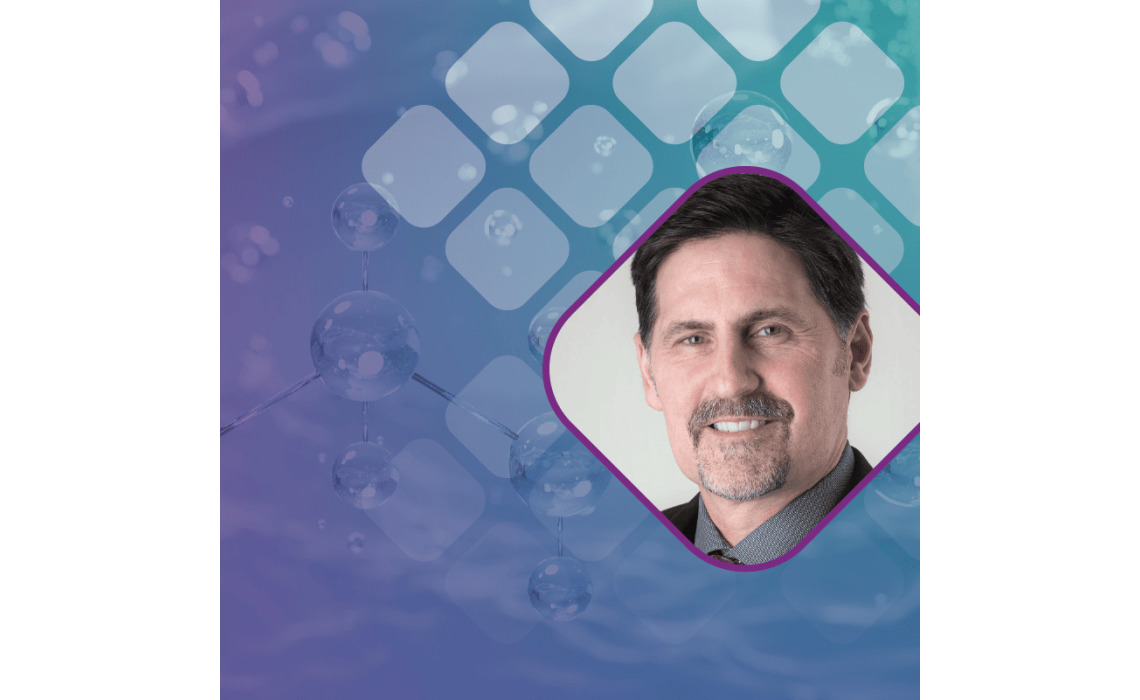ADVANCED ORGANIC ACIDS TESTING: Q&A WITH BOB MILLER, CTN, JOSEPH PIZZORNO & KURT WOELLER, DO
The following Q+A is a grouping of responses from the Day 2 workshop presentations. Click each presentation title to expand the answers from each speaker.
The material contained within this article is not intended to replace the services and/or medical advice of a licensed healthcare practitioner, nor is it meant to encourage diagnosis and treatment of disease. It is for educational purposes only. Any application of suggestions set forth in the following portions of this article is at the reader's discretion and sole risk. Implementation or experimentation with any supplements, herbs, dietary changes, medications, and/or lifestyle changes, etc., is done so at your sole risk and responsibility.
DAY 2 Q+A: ADVANCED ORGANIC ACIDS

KURT WOELLER, DO
Mitochondrial Dysregulation: Factors that Adversely Affect Energy Production | The Organic Acids Test and Neurochemical Imbalances That Every Practitioner Should Understand | Panel Discussion
Q: I seemed to have a lot of adverse die-off reactions when using nystatin for candida in my patients, even when starting with the lowest dose and which does not alleviate much even with toxin binders like GI detox. Do you see those reactions in your patients, and if so what would you do for it? Sometimes I add in liver support too but the die-off reactions are also very severe to the extent that they have to give up the protocol.
A: You might try some individual botanicals first, e.g., goldenseal for a few weeks, then switch over to low dose Nystatin. These are difficult situations so starting with single botanical remedy may help.
Q: Which markers are an indication of SIBO? Which markers are associated with aspergillus? How do you test for SIBO in children?
A: The bacterial markers in the bacterial section page 1. But the Organic Acids Test is not definite on SIBO. Markers associated with aspergillus are #2, #4, #5 and #6. I typically do not recommend SIBO testing in kids because it is too difficult.
Q: Have you used SB before in candida treatment protocol?
A: Yes, but not as single therapy. It would be used along with other probiotics and/or botanicals.
Q: I’m treating a patient with nutrient deficiencies and candida/ bacterial dysbiosis, which is causing mitochondria impairment. If the candida and bacterial dysbiosis has not been resolved, will providing and compensating nutrients alone alleviate the symptoms?
A: Resupplying nutrients often helps a lot, but will not completely resolve the problem if mitochondrial dysfunction is being caused by bacteria and yeast toxins.
Q: How do you explain to a patient who has normal vitamin levels on blood tests that they need vitamins based upon their Organic Acids Test results?
A: Blood testing is just one view of nutrients and does not always pick up or reflect what may be occurring at a cellular level. Therefore, indirect markers like Pyroglutamic and Methylmalonic acid are indicators of what’s happening within the cell.
Q: Can mold exposure (as evidenced by the MycoTOX Profile) without mold colonization (as evidenced by Organic Acids Test) still create an oxalate problem?
A: Not that I am aware of. It’s the mold producing the oxalate and not the mycotoxin.
Q: What is the significance of low aconitic?
A: According to the lab, there is no known clinical significance.
Q: How is NAC compared with glutathione in combating oxidative stress in mitochondria?
A: It works, but it needs to be converted into glutathione. I still prefer the end product of glutathione in most cases oxidative stress affecting the mitochondria. The problem is the cost and NAC is typically less expensive.
Q: Do PPIs for GERD affect the mitochondria?
A: Good question. I am not sure, but know that PPIs alter the gut and increase the risk of vitamin and mineral deficiencies. Other alternatives exist and should be explored first.
Q: How does PQQ and lithium orotate cause mitochondrial biogenesis?
A: I have not studied the mechanism involved. I know PQQ has an antioxidant effect. This would be a good research project.
Q: Mitochondria are said to come from the mother's side of the family. So, if your mom had good energy, you would also have good energy. Why is that?
A: Our genetics certainly play a role, but even more important moving forward in our lives are epigenetic factors affecting cellular function, including mitochondria.
Q: What if any reservations do you have with prescribing SAMe?
A: Bob Miller discussed this in-depth in his talk. I have seen some over-methylated special needs kids get hyper and emotional on SAMe. This may happen with sensitive adults too.
Q: Is there a way to test for the genetics of dopamine elevation? Or is it a diagnosis of exclusion?
A: GPL at one point had a DBH activity test. At this point, it just needs to be tested through genetics. Bob Miller’s genetic test is the most comprehensive.
Q: Should minor elevation in a clostridia marker always be treated?
A: Yes. I feel they should be.
Q: What is the dose for PTERIDIN-4?
A: I start with 2.5mg (one tablet) twice daily and progress from there. Typically, for most people 2.5mg to 5mg twice daily is enough.
Q: I have an adolescent patient with chronic depression who I measured Vitamin D and it was approximately 25. I know low D causing depression, which I find curious since the a child is outside a lot. I did rapid bolusing and remeasured. Vitamin D went down to 22. So, I thought maybe high dose bolus caused the increased breakdown. I increased slower, same levels. I could not get the child's Vitamin D up. What would you suggest looking for?
A: Look at his genetics. Also, it may be more advantageous to get natural sunlight activated Vitamin D over supplement D.
Q: Is there any role for the Organic Acids Test to assist with weight loss along with lifestyle changes.
A: Absolutely. Stressors of various kinds can alter metabolism and effect weight, mitochondrial function, etc.
Q: Thoughts on ingesting elemental silver 2.7 mg with peppermint oil to eliminate bacterial and fungal infection.
A: I have patients where colloidal silver helped a lot. I have not combined it with peppermint oil.
Q: What are your thoughts on using low-dose naltrexone for treating chronic inflammation, particularly in autism or even other conditions (like Down syndrome).
A: I like LDN a lot. Personally, I have never worked with a Down’s individual.
Q: Do you see this Quinolinic elevation is cases with chronic pain too?
A: Most definitely. One of things that can increase quinolinic is stress.

JOSEPH PIZZORNO, ND
The Link Between OAT, Mitochondria, and Environmental Pollutants, Including Phthalates and Bisphenols | How to Practice Environmental Medicine | Panel Discussion
Q: What are the symptoms of sulfur metabolism problems or what alerts you to sulfur metabolism problems? For those people, would an epsom salt bath 2 or 3x weekly aggravate the situation?
A: The symptoms I have seen of sulfur metabolism problems are allergies, GERD and IBS. I think magnesium deficiency very common and regularly recommend Epsom salt baths. However, I do not see a direct connection with sulfur metabolism.
Q: Would it be a reasonable option to use the GGTP and/or liver enzymes first before proceeding with toxic chemicals analysis?
A: Yes. I know patient funds are limited, GGTP can tell you if it is worth spending their resources on toxin testing.
Q: What are your DMSA dosage to chelate lead/ mercury in children? If you do not use DMSA, what do you do for children with heavy metals toxicity? Do you recommend using safer compounds like spirulina, fiber, and supporting the liver?
A: For younger people, I modify dosage according to the standard weight-based drug formulas. I believe it is fine to use these other approaches. They will simply be slower.
Q: How is arsenic getting into the water? Is natural spring water a better source of water or can natural springs also have arsenic contamination?
A: Arsenic in naturally present in many rock formations. So the amount of arsenic in the water is randomly depended upon the geology. However, arsenic has been used a lot in manufacturing and for wood preservation. Natural springs are only safer if far from industrial contamination and if the source is not naturally contaminated with arsenic. Some wells in the US, especially in Maine, have very high levels of arsenic. The only way to know if the water is safe, is to test.
Q: How reliable or effective would aqua foot detox foot baths be in removing heavy metals and how many treatments do you believe it would take to see results?
A. I am not aware of any convincing research.
Q: What is the best testing protocol for heavy metal detoxification for chemical-sensitive patient? What is the best heavy metals detox protocol for a chemical sensitive patient? I suspect high levels of mercury and multiple high chemical exposures.
A: If a person is sensitive to sulfur-containing chemicals like DMSA, I would only use first morning urine. I would still expect GGTP to be a reliable indicator of chemical as well as metal exposure. ALT is better for just chemicals, but not all chemicals increase ALT.
Q: Is it safe to give a child (a 3-year-old) NAC to boost immunity? If yes, how much? If no, what can I use?
A: Yes, but modify the dosage according to weight. Let’s say the child weighs 15 kg. The dosage would be 500 mg * (15/70) = 100 mg
Q: For post Covid, long-term effects, what mechanisms are at work and what botanicals are helpful to return the sense of smell and taste?
A: We’re working on that issue now. It looks like mitochondrial damage is a major factor.
Q: On the study showing that a high-fat diet reduces mitochondrial activity, did the study indicate the type of fat consumed and how does this apply to people on a ketogenic diet? Were they eating unhealthy polyunsaturated omega-6 fats?
A: Unfortunately the study did not specify so I assume the standard unhealthy fats. A different study, but in animals, showed that arachidonic acid specifically was damaging to mitochondria. So quite possible this is more an arachidonic acid problem rather than fat in general. More research is needed.
Q: For arsenic, what is better: quercetin or luteolin?
A: Intriguing question. Both are beneficial. However, not enough human research on luteolin to quantitatively compare. There is encouraging research showing that an increased intake of flavonoids increase the rate of conversion of inorganic arsenic to the safe DMA.
Q: You mentioned lactate as a test for mitochondrial function. What range do you use? Is there an optimal range different than the lab range? Do you shoot for >50% of the lab range?
A: I use the conventional ranges. I am not aware of research suggesting an optimal range for lactate.
Q: Does the product Mito Q from New Zealand work better than US brands? If so, why?
A: Looks like an intriguing supplement. Not complete, however, and I do not see any reason why it would be better than a good quality US version.

BOB MILLER, CTN
Using the OAT to Understand Methylation and Glutathione in Our Patients | Panel Discussion
Q: What dosage of riboflavin has been found to reduce hypertension?
A: In the report that I read, I did not see any specific dosage. Keep in mind, we can’t assume that riboflavin will always lower blood pressure because there are many factors that lead to hypertension and there are probably unique situations that riboflavin is helpful for.
Q: Is it a good idea to just throw in an activated B complex to fill in all gaps instead of just giving a certain B vitamins?
A: In my clinical experience, many times an activated B complex can cause problems as many times as it can be helpful. As we discussed, both folate and B12 can stimulate the HNMT enzyme which will create more N-methyl histamine. If the MAO enzyme is not working properly because of mutations in MAOA, mutations in SIRT1, or lack of riboflavin, the folate and B12 can make the situation worse. Additionally, if someone has overstimulation or gain of function on HDC (histidine decarboxylase), the B6 can stimulate more histamine as well. Finally, folate does stimulate mTOR which can weaken autophagy. In this time of COVID, it has been found that COVID uses mTOR for replication, so I am a little bit cautious in wanting to overstimulate mTOR. Of course, the exception is pregnant women who need the folate to stimulate mTOR for a healthy pregnancy.
Q: How to decide which forms of folate to give patients, like Folinic acid, methyl folate, etc?
A: I am not sure there is a tried and true formula, however it is best to determine if the person has adequate methyl groups. If someone for some reason may have high levels of methyl groups which could be related to genetic mutations in the using of SAMe for making creatine, methyl folate can be contraindicated. A simple test is 50-100 mg of niacin on an empty stomach. If the person flushes and has a horrible histamine reaction, they may do better on methyl folate. If they feel nothing or feel better, folinic acid may be a better choice.
Q: Would you ever advise anyone to avoid methionine-enriched baby foods?
A: I am not familiar with how methionine can impact a baby. Theoretically, if anyone has difficulty converting methionine to SAMe either by genetic mutations, lack of ATP, or hydroxyl radicals, high methionine could be contraindicated.
Q: Would you recommend taking creatine as a supplement for intense resistance training?
A: I am a big fan of moderation in everything, and keep in mind that if you take creatine, it could spare SAMe. If someone is already overmethylated, it could be contraindicated. I think your best bet is to check your methylation status or start out with small amounts and see how it is tolerated.
Q: How do you determine the dosage of SAMe and adverse reactions? Is SAMe safe to use on infants/ toddlers?
A: Since SAMe stimulates mTOR, and I believe that we are already due to exogenous factors have a high mTOR and low autophagy, I am very cautious. I usually never start out with more than 50-100mg, although there are some sold at 200mg. As we discussed earlier, SAMe will stimulate HNMT. If someone already has a histamine problem, SAMe could make it worse. In regard to infants/toddlers, I really don’t know the answer to that, but I would be extremely cautious.
Q: Can we supplement with too much glutathione or any other antioxidants?
A: First, keep in mind that although we think of free radicals as being bad, they do play a role in killing pathogens. In theory, you could take too many antioxidants, but with all the oxidative stress going on that might be very difficult to do. However, it is easy to backfire with glutathione. As we discussed in the presentation, weakness in NRF2, gain of function on KEAP1, weakness in GSR, lack of NADPH, or lack of riboflavin, can create a situation where oxidized glutathione does not turn back into reduced. Consequently, when someone is supplementing with glutathione, if it becomes oxidized and does not turn back to reduced, that oxidized glutathione can combine with oxygen to make superoxide and as ironic as it may seem, too much glutathione can make free radicals and deplete your glutathione.
Q: Which test do you use to identify SNPs? What is the best genetic test to add for a further deep dive for patients with multiple chronic disease issues?
A: I may have a conflict of interest/prejudices here, but I believe Functional Genomic Analysis is the best bet to look at function. If you are looking at disease SNPS then this would not be your choice, but if you are looking at function, this is your best bet. Contact us at functional genomic analysis and we can send you a video that demonstrates how this works.
Q: Do you have general dosing guidelines you recommend for B2 when you see very high glutaric levels indicating a very moderate/severe B2 deficiency?
A: I generally start out with around 37-40 mg and then double it if needed.
Q: Dr. Ben lynch mentions that GUT inflammation inhibits the many GSH synthesis pathways. Have you seen this happen? He recommends PQQ. Have you used PQQ to support glutathione?
A: I never correlated gut issues with glutathione synthesis, but I am sure Dr. Lynch has a reason. I am a big fan of PQQ as it relates to energy production, but I am not aware of the mechanism that would allow it to support glutathione, but there likely is one.
Q: It seems like some people with mutated SNPs react adversely with the use of glutathione only without supporting other nutrients. In your clinical experience, what is the approximate percentage of patients having adverse reactions to using glutathione without testing for the various relevant SNPs? Is it necessary to test for the relevant SNPs before giving glutathione?
A: In our health consulting, we see a unique client base of people with chronic Lyme, extreme mycotoxins, and for these individuals, the reason traditional things are not working for them is often they do have difficulty recycling their glutathione. With that skewed database, I would say 60-75% of the people I see have difficulty converting their oxidized glutathione back to reduced, but again that may be due to the uniqueness of the customer base here. I don't know that it is always necessary to test for relevant SNPS, but if the individual is extremely sensitive, has had negative reactions to glutathione in the past, then I believe checking is very important.
Q: What are some of the possible causes of high NAC without supplementation and normal pyroglutamic levels?
A: There are enzymes GCLC and GCLM that convert cysteine into glutathione that could be mutated. Mycotoxins also inhibit the conversion and weakness in NRF2 and/or gain of function in KEAP1 that inhibits NRF2 may cause the NAC not to turn into glutathione. Keep in mind that NAC that is not turned into glutathione may go down the transsulfuration pathway, stimulating sulfites, which by itself can be a problem, but if combined with weakness in SUOX turning sulfites to sulfates can be very pro-inflammatory.



